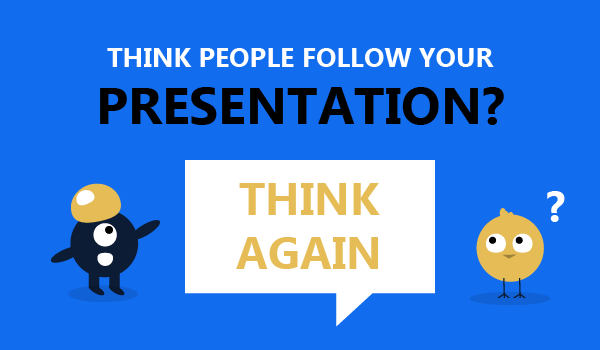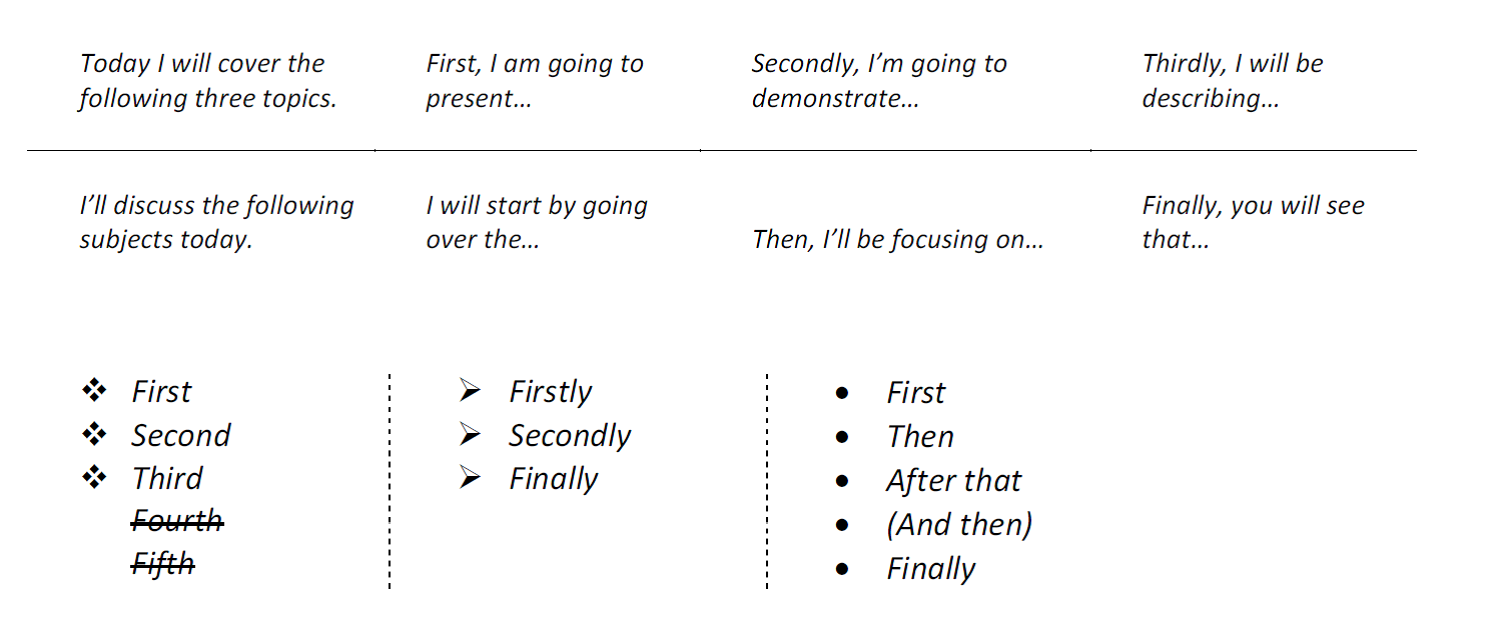
We have much to thanks the TED talks series for: not only did they provide us with excellent topics like Cameron Russell’s “Looks Aren’t Everything. Believe Me, I’m a Model,” or Hans Rosling’s “The Magic Washing Machine,” but they also put the idea of great presentation skills front and center again.
As with most things in life, preparation is key to a great presentation. For example, TED’s own advice for presenters suggests that they begin working on the theme and basic outline six months before the day of the presentation! Three months before, you should be having bi-weekly rehearsals. One month out? Weekly rehearsals. And all this for a 15–18 minute talk.
Now, the reality at work is somewhat different to this. Presenting a project to colleagues at a weekly meeting? I doubt you start planning six months in advance! You will probably be preparing slides that morning, because you were too exhausted the night before.
“Let’s look at the slides, they explain everything.”
You employ all of your considerable presentation skills to hammer, beat, and sculpt your slides into the best shape possible in the time you have available. You feel you owe it to your colleagues to show them some “wow.” Five minutes before the meeting starts, you look over your slides and think, “Okay, let’s go!”
And, then what happens? You stand up in the meeting, you begin talking, and before long, you probably say something like, “Let’s look at the slides, they explain everything.” You go through your slides efficiently and professionally, stick to the clock, deftly handle the questions you were asked, and sit down, flush with the buzz that comes from getting across the finish line.
Think everyone in the room followed your presentation? Think again. You missed most of the seven fundamental steps to starting a presentation. And the sad truth is that at least some of the people starting out thinking, “Why are we listening to this? What’s it got to do with me?”
Unfortunately, most of the time we don’t consider why we are presenting
What was the aim of your presentation? To present the new project? Well, present means simply “to show,” so you could just as well have set the presentation slides to “play” and sat back while your colleagues read all about it.
No, it was either to inform or to persuade. You can inform them about the project – its aim, schedule, deliverables, and so on – or, persuade them that the project is a good one – for the company, for the customer, and so on. But you can’t do both.
Unfortunately, most of the time we don’t consider why we are presenting, so we end up neither properly informing nor persuading. I was recently asked to present some new pages we created for our website to my colleagues: I decided beforehand that my aim was not to inform them about the pages. Who really wants to know about the process, how long it took, what challenges we faced, and how proud we are of the outcome?
Doesn’t everyone in the room know me?
Instead, I decided that I really needed them to get customer feedback so we could improve the user experience. That decision had a huge effect on the content of my presentation: both the words I use and the content of my slides.
Now that I know why I am presenting, I can start creating my introduction.
But why all the fuss? Doesn’t everyone in the room know me? And didn’t they all get the email or calendar invitation that I’m presenting the new project?
Sure, they know that you’re presenting, but not your aim. The subject line “Update on the new project” probably didn’t tell them much. So, here are the crucial seven steps that your audience will follow, if you remember to use them:
Okay, let’s get the simple one out of the way first.
But, tell them who you are in this case. That means using a clear presentation phrase to tell them that, “I’m the delivery manager for this project” or, “I’m responsible for ensuring that our customer experience on the website is as good as it can be.”
Now, they’re already starting to get an idea of your aim. Here are some other common presentation phrases for greeting:
Good morning, ladies and gentlemen. (Formal)
Good afternoon! Shall we get started?
I’m Jaana Lindholm, the CEO of Mobile Madness. (Formal)
Hi! Most of you already know me. But, for those who don’t, I am Sari Lindqvist, the manager for this project.
This is my colleague, Joni Mäkinen, our Chief Financial Officer. (Formal)
As we all know each other, let’s skip the formal introductions.
Never assume everyone knows why you – or they – are in the room!
People don’t read their emails and calendar invites, so give it some context. If you’re not sure what background to give (why we decided that we need a new project), try telling them the reason you’re there: “I was asked by the management team to introduce the new website to you, so that you know what questions to ask our customers about it when they call.”
Now, no-one is wondering, “Why are we listening to this?”
Here are some other simple presentation phrases:
As you all know...
Before we begin…
I was asked by some of your team leaders to give you an insight into…
This is your focus point for the whole presentation:
“What I’d like to do this afternoon is show you an overview of the new project.” If that is your aim, then spell it out for the audience – they won’t know if your presentation did what it set out to achieve if they don’t know what it set out to achieve!
You could also use one of these:
The topic of my presentation today is… (Formal)
What I’d like to do this afternoon is present the results of our latest...
My focus today will be…
My hope today is to convince you that using our service can…
This is what experts refer to as “Tell your audience what you’re going to tell them.”
And it is an essential part of any presentation.
Why? Because repetition is the mother of learning. Order your thoughts – first, second, then, after that, and so on. If you don’t order them, do you expect your audience to do it for you?
And how will your colleagues know when is a good time to ask their questions if they don’t know the structure of your presentation?
Here are some examples taken from our course material that I teach my students to use:

The top row for informative and the second for persuasive.
There’s also a simple list of ordering words: you can use first(ly), second(ly), and third(ly), but stop there. It’s best to avoid using fourth(ly) and fifth(ly) when speaking. Instead, native speakers tend to use combinations of then, after that, and finally for long lists.
And anyway, you should really limit your presentation to threes: three parts (introduction, body, and conclusion) and three points in the body, and three points per topic… but that’s a topic for a future post!
Let them know how long you will speak for.
It stops them distracting themselves with an internal monologue: “Should I ask my question now?” “Maybe he’s nearly finished.” “Did I miss my chance?”
Don’t forget, everyone loves to hear the presenter say, “I plan to be brief”!
Here are two more:
My presentation will take about twenty minutes.
I will take only about fifteen minutes of your time.
Set out your policy so that no one is in any doubt.
And remember: if you are going to let people ask questions during your presentation, do it positively.
Why not encourage people: “I’d love to hear your thoughts, so if you have any questions, please go right ahead and ask.”
Don’t forget to be polite!
Please feel free to interrupt me if you have questions.
Feel free to ask questions at any time.
You may ask questions at the end of the presentation.
Please hold your questions until the end of the presentation.
This is the signal that we will now move from the introduction to the first topic, safe in the knowledge that everyone in the room knows the purpose and structure of your presentation. And best of all, you didn’t have to start planning six months in advance!
Here are some useful examples:
Right, so let’s move on to our first topic.
So, let’s begin with our first topic.
Our first topic is the new environmental certification, so let’s move straight on to that.
Remember, your aim is never just to present something!

Is your presentation highly polished, but you’re unsure about language fluency? Use our verbal sparring calendar to book a time with a language instructor to help you perform better with your presentation. If you have more time until your presentation and want to build confidence in the language, contact us. Our experts will help you choose the most suitable language training for your needs.










